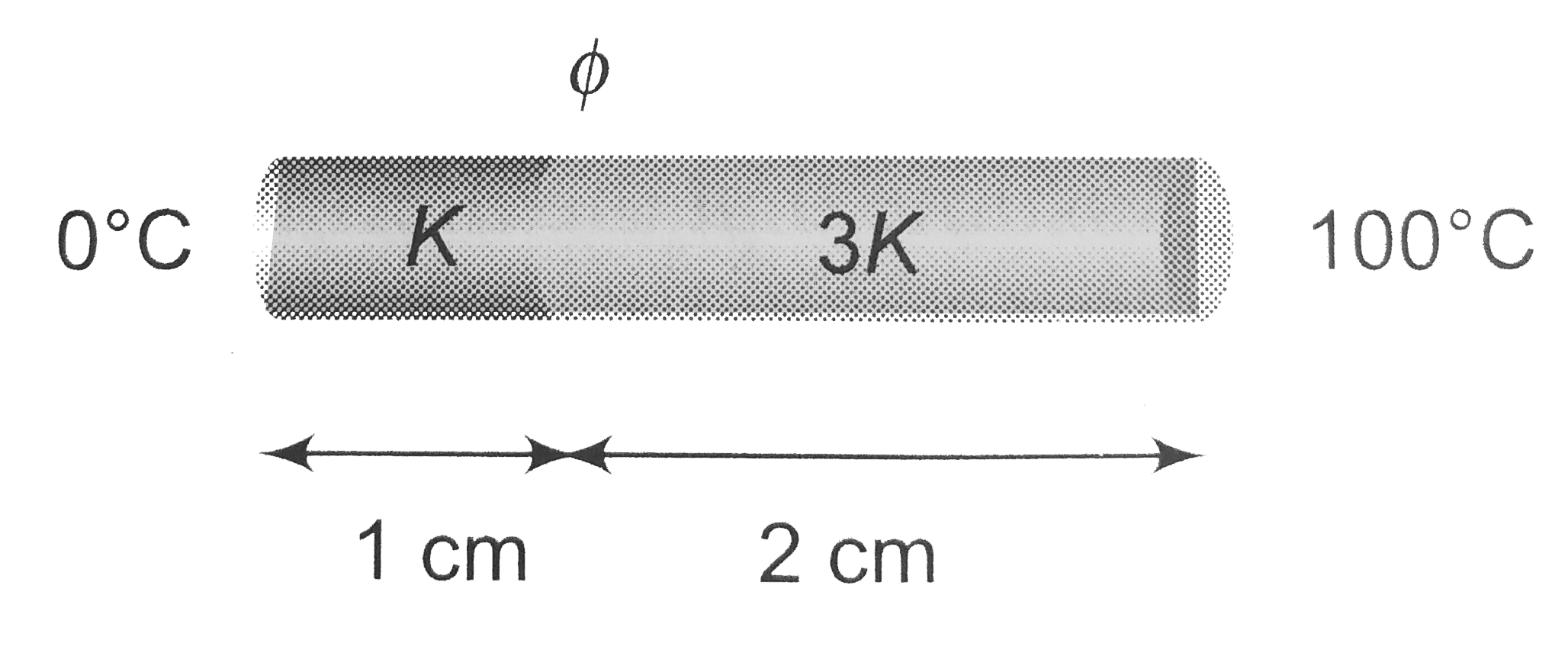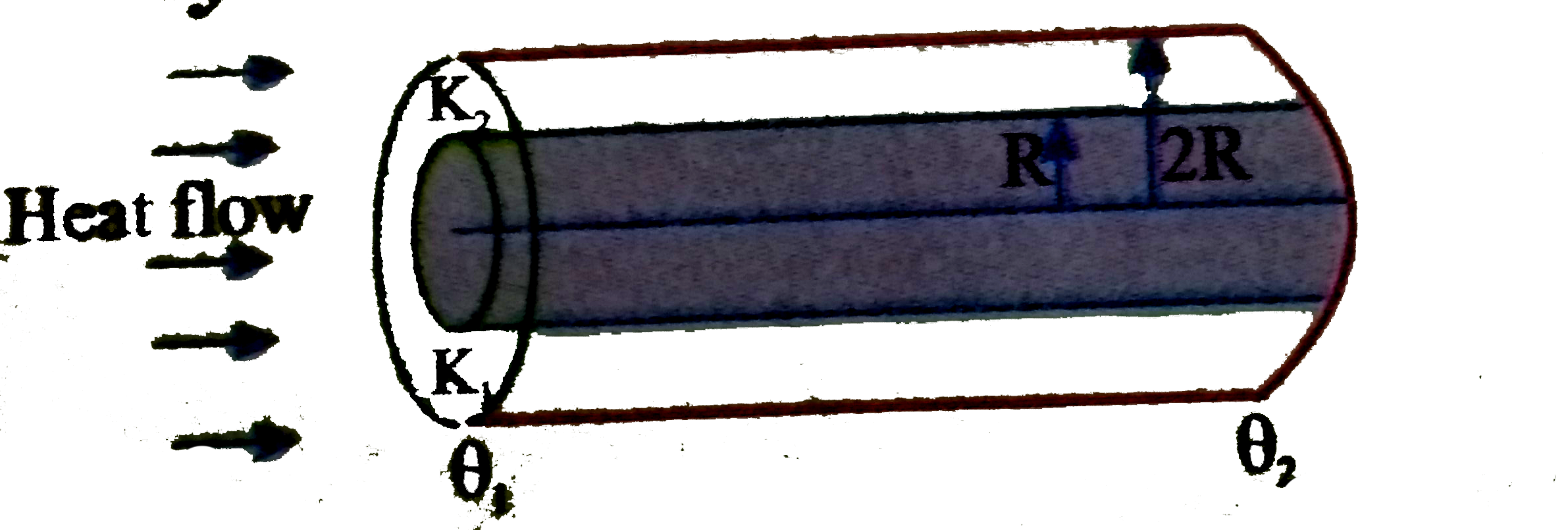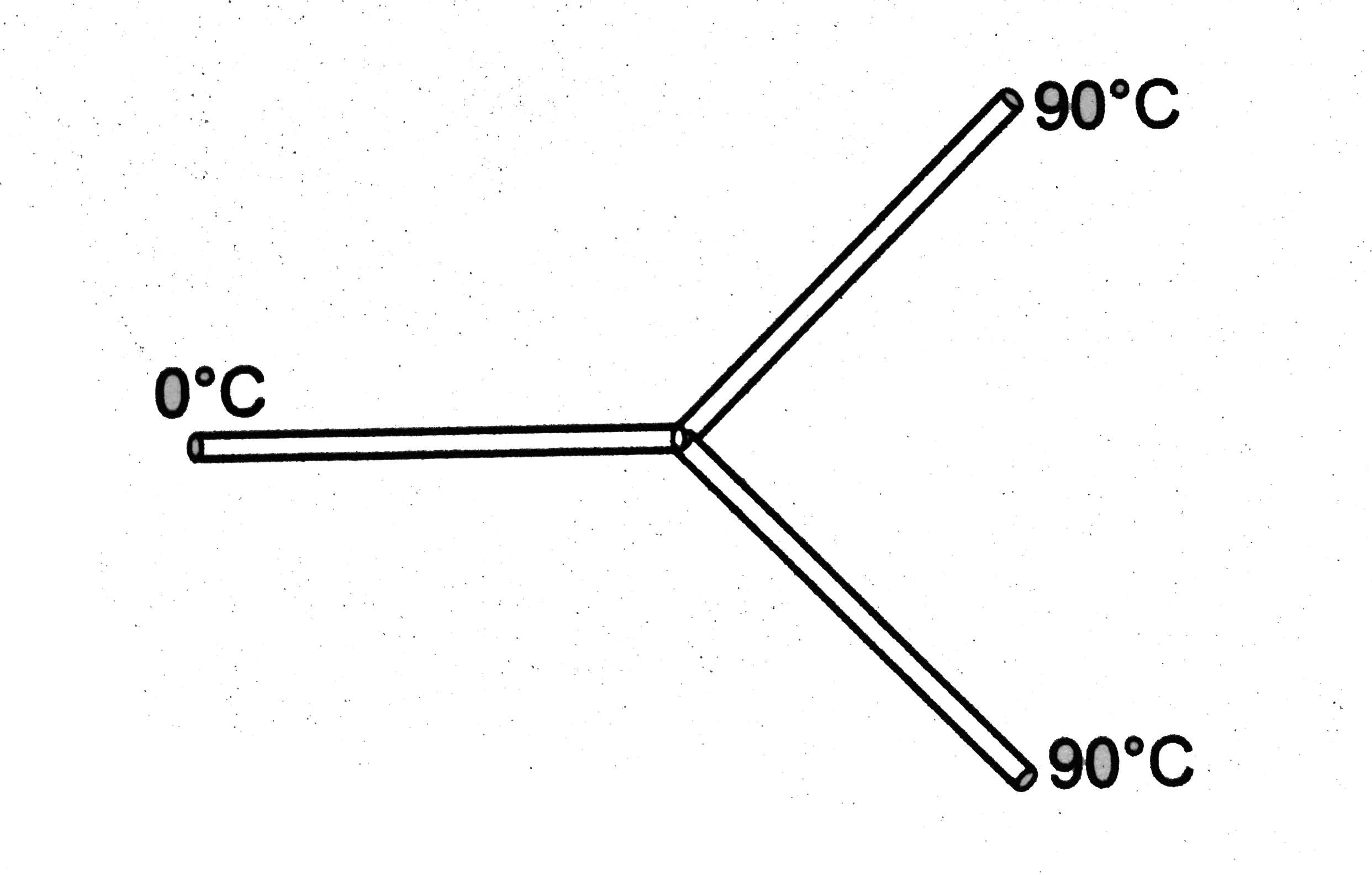Complete Solutions to Single correct Answer Type of chapter TRANSMISSION OF HEAT of Class 11 book with complete answers and questions
| Class 11 | PHYSICS |
| Chapter | TRANSMISSION OF HEAT |
| CENGAGE PHYSICS DPP | Single correct Answer Type |
| Number Of Questions | 9 |
| Academic Year | 2023-24 |
Two bars of thermal conductivities `K` and `3K` and lengths `1 cm` and `2 cm` respectively have equal cross-sectional area, they are joined lengths wise as shown in the figure. If the temperature at the ends of this composite br is `0^(@)C` and `K^(2)//l` respectively (see figure), then the temperature `phi` of the interface is
 03:26View Solution
03:26View SolutionA wall has two layers A and B each made of different materials. Both the layers have the same thickness. The thermal conductivity of materials A is twice of B. Under thermal equilibrium temperature difference across the layer B is `36^@C`. The temperature difference across layer A is
05:16View SolutionA cylinder of radius `R` made of a material of thermal conductivity `K_(1)` is surrounded by cylindrical shell of inner radius `R` and outer radius `2R` made of a material of thermal con-ductivity `K_(2)` The two ends of the combined system are maintained at two differnet tem-peratures There is no loss of heat across the cylindrical surface and system is in steady state What is the effective thermal conductivity of the system
 .04:13View Solution
.04:13View SolutionThree rods made of the same material and having the same cross-section have been joined as shown in the figure. Each rod is of the same length. The left and right ends are kept at `0^@C` and `90^@C`, respectively. The temperature of junction of the three rods will be
(a) `45^@C` (b) `60^@C`
(c) `30^@C` (d) ` 20^@C`.
 02:35View Solution
02:35View SolutionIce has formed on a shallow pond, and a steady state has been reached, with the air above the ice at `-5.0^(@)C` and the bottom of the pond at `40^(@)C`. If the total depth of ice + water is `1.4 m`, (Assume that the thermal conductivities of ice and water are `0.40` and `0.12 cal//m C^(@)s`, respectively.)
The thickness of ice layer is03:56View SolutionTwo identical conducting rods are first connected independently to two vessels, one containing water at `100^@C` and the other containing ice at `0^@C`. In the second case, the rods are joined end to end and connected to the same vessels. Let `q_1 and q_2` gram per second be the rate of melting of ice in the two cases respectively. The ratio `q_1/q_2` is
04:37View SolutionA solid cube and a solid sphere of the same material have equal surface area. Both are at the same temperature `120^(@)C`, then
03:25View SolutionThe two opposite faces of a cubical piece of iron (thermal conductivity = 0.2 CGS units) are at `100^(@)C` and `0^(@)C` in ice. If the area of a surface is `4cm^(2)` , then the mass of ice melted in 10 minutes will b
03:11View SolutionA conducting cylindrical rod of uniform cross-sectional area is kept between two large chambers which are at temperatures `100^(@)`C and `0^(@)`C, respectively. The cconductivety of the rod increases with x, where x is distance from `100^(@)`C end. The temperature profile of the rod in steady -state will be as
 View Solution
View Solution
Single correct Answer Type questions and complete solutions for chapter TRANSMISSION OF HEAT of CENGAGE PHYSICS (HINGLISH) of Class 11
